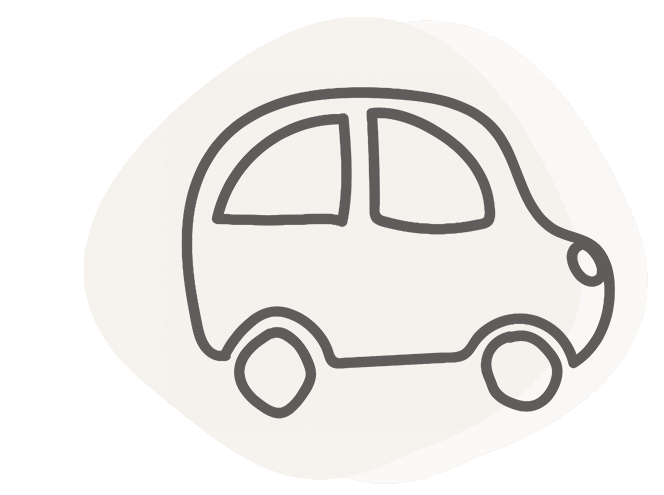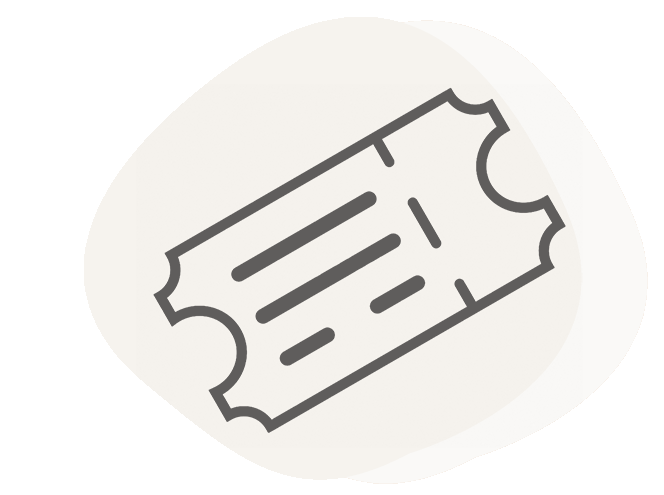
Cradled within the heart of the stunning Alpbachtal Valley lies the vibrant village of Kramsach. With four pristine bathing lakes, an alpine lake perched high above, and the Brandenberger Ache River winding its way past the village through dramatic gorges, the water element reigns supreme here. Embrace adventure by exploring the landscape via kayak, hiking trails, or thrilling via ferrata routes. Or simply stroll through the historic village and visit its open-air museums for a taste of old Tyrol.
Here is your guide to the best things to do in Kramsach!
Best Things to Do in Kramsach
Kramsach, along with Alpbach and Rattenberg, is among the quaint villages of the Alpbachtal that you should not miss when visiting the valley. Being the largest village with plenty of surrounding attractions, you can use it as a base to spend a couple of nights and explore the rest of the Alpbachtal by car or bus.
The village features no fewer than four bathing lakes with some of the warmest temperatures in the region, attracting locals and tourists alike. Additionally, there are leisurely hikes to gorges and lakes, three open-air museums, and adventure parks, ensuring there are plenty of activities to keep the whole family entertained.
At the same time, Kramsach offers thrilling experiences for adventure lovers. You can enjoy kayaking, rafting, and tubing on the Brandenberger Ache, hike up 1000m to the stunning Zireiner Alpine Lake, or tackle a via ferrata above the Reintaler Lake.
Without further ado, here are the best things to do in Kramsach!
1. Lake Reintal (Reintalersee)
Nestled in a side valley in Kramsach lies Lake Reintal, the largest of the Kramsach lakes, divided into three pools. Together with its nearby counterpart, Krummsee, they are among the warmest (up to 25°C) bathing lakes in Tirol. Whether you are here to relax or be more active, there is no shortage of activities.
For those looking to unwind, Reintalersee offers swimming opportunities and sunbathing lawns scattered around its shores. Café-restaurants such as Fischerstube and Seerose provide delightful spots for enjoying a meal lakeside, while a barbecue area allows visitors to grill their catch, should they choose to fish.
Adventurers can rent rowing and pedal boats from Restaurant Fischerstube. Additionally, a barrier-free path (“Seerundweg”) starts from the car park and circles the lake, taking approximately 1 hour to complete. For those craving more excitement, two climbing routes provide an exhilarating challenge.

Getting there: If traveling by public transport, take Bus #621 and alight at Parkplatz West for lake access or Parkplatz Halbinsel for the Via Ferrata. For drivers, several parking spots are available around the lake, typically charging €1.00 per hour or up to €5.00 for the entire day. Ensure your parking ticket is clearly displayed behind the windscreen.
2. Museum of Tyrolean Farmhouses
Set east of the Reintalersee, the open-air Museum Tiroler Bauernhöfe offers visitors a fascinating insight into life in the valleys of Tyrol during the pre-industrial period. This unique museum showcases a remarkable assortment of historic farms, each meticulously disassembled and carefully transported from various Tyrolean valleys to its present location.
The expansive grounds feature 37 authentic structures, including 14 rustic farmhouses, a functional blacksmith’s forge, a quaint old schoolhouse, a serene chapel, operational mills, and humble lumberjacks’ huts. The arrangement of these traditional buildings on the hilly terrain masterfully recreates the ambiance of a living village, immersing visitors in a genuine slice of history.
Adding to the authenticity of the farm-life experience are free-ranging farm animals and vibrant farmers’ gardens that grace the landscape. As you explore the interiors of certain buildings, you’ll discover video installations where animated characters recount their life experiences on the farm. Additionally, the museum offers an enlightening exhibition that delves into the techniques employed by lumberjacks as they navigated the formidable challenge of transporting colossal tree trunks through fast-flowing streams and rivers.
Tip: To explore, meander along the 3km circular walking path at your own pace, or opt for an enriching 2-hour guided tour to deepen your experience. For an extra dose of local culture and festivities, be sure to time your visit with the annual Kirchtag fair, a vibrant celebration held every September.

Operating Hours : From Palm Sunday to April and in October, the museum welcomes visitors daily from 09.00 to 17.00, with the last admission at 15.30. From May to September, it closes an hour later, at 18.00, with the last admission at 16.30.
Ticket Prices: Admission for adults is 12€, while children aged 6 to 17 can enter for 4€. Children up to 5 years old and Alpbachtal Card holders enjoy free entry. The ticket price includes an audio guide. For those who prefer a guided tour, a standard fee of 55-60€ (depending on the chosen language) is charged for groups of up to 20 people.

Getting there: By Bus #621, get off at Kramsach Bauernhöfemuseum. If traveling by car, you can park at the same location where the bus drops you off.
3. Lake Berglstein (Berglsteiner See)
Somewhere between Kramsach and Breitenbach and surrounded by deciduous forests and mountains, lies the pristine Lake Berglstein. Covering 2.6 hectares, it may not be one of Tyrol’s largest lakes, but its idyllic location makes it one of the most picturesque. A real insider tip for those seeking tranquility, this lake boasts an easy trail that leads around it, romantic spots to relax on the shores, and the 712er Lounge serving delicacies on its terrace right by the water.
Start your hike from the Parking Reintaler Ost by following the signs for the Leichter-Lernen-Weg (Easy Learning Trail) uphill to Berglsteiner See. It takes about 20 minutes to reach the lake and up to one hour to circumnavigate it (4 km, +150 m ascent). Along the trail, 12 boards suggest exercises to improve learning and concentration abilities for all ages (Kinesiology).

Getting there: By car, drive to Parking Reintaler Ost and park directly there. Alternatively, take Bus #621 and get off at the Kramsach Parkplatz Halbinsel stop, from where it is a 5-minute walk along the road to the parking lot.
4. Alpine Lake Zirein (Zireiner See)
Zireiner See is one of the most beautiful alpine lakes in Tyrol, lying idyllically in a valley basin in the middle of the impressive Rofan Range. There are two different ways to reach the lake, both demanding but rewarding with fantastic views and rustic mountain huts: one from Aschau-Wimm and the other from Kramsach.
If you want to follow the trail from Kramsach, head to the Sonnwendjochbergbahn Car Park and make your way up to Berghaus Sonnwendjoch, covering an ascent of more than 1,200m in about 6.5km. From there, the viewpoint to the lake requires one more brief ascent, and then you take the long way back to the trailhead, passing by the Bayreuther Hütte along the way. This is a total of 18km, with an ascent of 1,400m for the round trip, requiring about 8-9 hours to complete.

An alternative route for those with an e-bike is to first head to the Bayreuther Hütte by bike (7km, +1,000m ascent). From there, they can reach the lake in about an hour (3km, +300m ascent) and return the same way.
5. Tiefenbach Gorge (Tiefenbachklamm)
With its turquoise-green waters, striking rock formations, and magnificent views from its viewing platform, Tiefenbach Gorge is one of the most popular destinations, especially on hot days.
The easy hike takes you along a well-maintained trail through the gorge, mostly on stone and gravel paths high above the viewing platform. From there, the trail crosses the roaring Ache three times via bridges, offering perfect spots to watch kayakers navigating the rapids. Soon after, the valley opens up into a meadow where the Jausenstation Tiefenbachklamm provides a delightful resting spot. The walk from the start to the end of the Tiefenbach Gorge takes about 1.5 hours, and you can return the same way.
Note: For safety reasons, the gorge is closed from November to April and during heavy rain in the summer.

Getting there: From the center of Kramsach, Bus #611 will drop you off at the entrance (stop Tiefenbachklamm) in just 8 minutes. Timetables are available here. There is also a free parking lot just before the bus stop.
6. Jolly Cemetery (Lustiger Friedhof)
Hidden just beyond the Sagzahnschmiede forge lies a one-of-a-kind cemetery known as the Lustiger Friedhof Museum. Here, laughter reigns supreme, and the departed remain very much alive in spirit. Hans Guggenberger, the forge’s proprietor, has curated an extraordinary collection of wrought-iron grave crosses and tombstones from the previous century. These artifacts are not just monuments; they are canvases for unique inscriptions that reveal a delightful sense of humor.
The local peasant painters, affectionately known as “Tuifelmaler,” or “Devil Painters,” poured their creativity into crafting these whimsical two-liners, each a playful attempt to capture the essence of the departed’s life. As you stroll along the charming pathway that winds through this extraordinary relic of yesteryears, you’ll encounter inscriptions that may seem eccentric at first glance, but rest assured, one is bound to bring a smile to your face.
Note: The inscriptions are in German, so if you do not understand the language, there is not much sense in coming here unless you use a translation app to understand the inscriptions.

Operating Hours & Tickets : The museum is open from Monday to Friday, welcoming guests from 9:00 to 17:00. Admission is free, but there is an offering box at the entrance with a suggested donation of 4 euros.
7. High Rope Adventure Park (Naturhochseilgarten)
Natur-Hochseilgarten Kramsach is an expansive adventure facility set in an 8,500 square meter forest. It boasts an intricate network of 7 kilometers of steel rope courses, all closely supervised by trained instructors.
Visitors can choose from three distinct courses. The Mammoth Tour, at 18 meters high, is both physically and mentally demanding. The Eagle Tour, reaching 12 meters, offers a more playful experience. For younger visitors and those who love zipping between trees, the Flying Fox course provides an exhilarating ride.

The park is open year-round, but prior reservations are essential. Secure your spot by making a reservation here.
8. Pilgrimage Basilica Mariathal (Wallfahrtsbasilika Mariathal)
This church, with its black and gold interior details, is a stunning example of Baroque architecture. Historical records indicate that the Fruntsberg brothers built the church at their parents’ behest as a family resting place. Dominicans from Altenhohenau were entrusted with the care of the church and the duty to pray for the Fruntsbergers’ eternal peace.
But legend has it otherwise: a knight named Berthold von Fruntsperg fired an arrow toward his brother’s window to wake him up for a joint hunting expedition. Tragically, his brother was opening the window at that moment and was fatally struck by the arrow. Consumed by guilt, Berthold roamed through the forest, where he chanced upon an image of the Virgin Mary affixed to a tree. This inspired him to establish the Mariathal Monastery at that very spot.
The revered image of Mary is now housed in the Chapel of Grace within the parish church, along with a depiction of its legendary discovery. A pilgrimage, featuring a candlelight procession, takes place every 13th of the month from November to April, drawing many faithful to the site.

How to explore: Start at the Basilica and follow the path through the cemetery to a gate marking the beginning of the Way of the Cross. This forest path, adorned with stations created by local artists, runs alongside the former Mariathal monastery's wall. After about 15 minutes, it culminates at Kalvarienberg, where Christ's crucifixion is depicted. Descend right along the wall to the road, where you can continue to the Sculpture Park or return to the Basilica.
9. The Sculpture Park (Skulpturenpark)
A short walk away from Mariathal and alongside the Brandenberger Ache stream, you’ll discover a remarkable open-air exhibition crafted by Alois Schild, a celebrated local artist and a student of the renowned Gironcoli. The Skulpturenpark seamlessly weaves together the enigmatic, creature-like sculptures with the untouched beauty of the natural surroundings.
Alois Schild’s art is inspired by metal, his chosen medium. Despite the material’s heaviness, his large sculptures often appear light and weightless. A unique aspect of his work is allowing nature to interact with his pieces, embracing rust as part of the artistic process.
The admission is free year-round and occasionally concerts and exhibitions take place here.

How to Get to Kramsach in Tyrol
The closest international airport to Kramsach is Innsbruck Airport, approximately 50km away. Other nearby airports include Munich (MUC), about 150km away, and Salzburg (SBG), 120km away. Austria boasts an excellent public transport system, making it convenient to reach Kramsach and explore the surrounding areas even without a car.
By Public Transport
Regardless of your arrival airport start by taking a train to Brixlegg Bahnhof. Depending on your point of departure, you may need to transfer trains a few times before reaching Brixlegg. From Brixlegg train station, board Bus #621 heading towards Breitenbach.

Tickets: Check train and bus connections here. Note that If you've booked accommodation in Alpbachtal, you can use the VVT buses from Wörgl or Jenbach to reach Kramsach for free by showing your booking confirmation.
Travel Tip: If you plan to explore Tyrol for a few days, consider the weekly ticket (€50) or monthly ticket (€112) for convenient travel across the province. For two people traveling together for a day, the 2Plus Day Ticket (€38) offers great value.
By Car
If you prefer driving, you can rent a car at Innsbruck Airport. Visitors with their own vehicles should note that all Austrian motorways (“Autobahn”) and expressways (“S” roads) require toll payment. You must display a physical toll sticker on your vehicle’s windshield upon entry into the motorway or have a valid digital toll sticker.
Getting around
While most places are accessible on foot, biking is an excellent way to explore the region, whether on a classic bike or an e-bike. Bike rental shops in the area include Bike Profi 31 in Kramsach and BIKEWERK by Connys in Brixlegg.
For convenient travel by bus, VVT buses serve the region. Staying overnight in any village within the Alpbachtal region grants you the Alpbachtal Card, a visitor’s card that includes free rides on Regiobus throughout the area.

Where to Eat in Kramsach
Kramsach, surrounded by rivers and lakes, offers charming spots where you can dine or enjoy coffee with scenic views. Many establishments feature fresh fish dishes alongside hearty Alpine specialties such as Tiroler Gröstl (roasted potatoes with eggs and vegetables), Spinatknödel (spinach dumplings), and Käsespätzle (Austrian mac and cheese). Pair these dishes with locally brewed beer or Tyrolean schnapps for an authentic culinary experience.
A must-try sweet delicacy of the region is the Prügeltorte. Traditionally baked over an open fire on a spit until golden brown, it has been a festive pastry for generations, especially at family celebrations like weddings and christenings.
Here are some recommended restaurants in the region:
- Gasthaus Mariathal: A typical Tyrolean inn offering delicious food and a lovely garden overlooking the Brandenberger Ache.
- Prügeltorten Mader: Located in a picturesque residential building, this bakery-like establishment specializes in the famous Prügeltorte.
- Fischerstube Restaurant & Cafe: Situated by Reintalersee Lake, known for its tasty and fresh fish dishes. The fish burger and fish trio are highly recommended.
- Restaurant-Cafe Seerose: Also located by Reintalersee Lake, renowned for its steaks and dining with a view.
- Berglsteinersee 712er Lounge: A cozy wooden chalet perfect for a lunch break while exploring the scenic Berglsteinersee.

Where to Stay in Kramsach
Kramsach, along with all the villages in the Alpbachtal, nestles in the heart of the Austrian Alps, offering a quintessential alpine experience. Charming guesthouses dot the entire valley, characterized by traditional Tyrolean architecture, cozy wooden interiors, picturesque balconies adorned with blooming flowers, and breathtaking views of the surroundings.
Whether you choose to stay in Kramsach itself or nearby villages such as Rattenberg or the quaint Alpbach further south, you’re guaranteed a memorable stay. And don´t forget that you’ll also receive the Alpbachtal Card at check-in, providing various perks and freebies!

Where to Stay: Freundsheimhof, Kramsach ~ Windhaghof, Kramsach ~ Hotel Landgasthof Gappen, Kramsach ~ Boutiquehotel, Rattenberg ~ Weiherhof, Alpbach ~ Gästehaus Gratlspitz, Alpbach
Camping: If you’re traveling with a campervan, there are several campsites around the lakes to consider. Options include Camping Seeblick Toni and Camping & Appartements Seehof around the Reintalersee, and Seen Camping Stadlerhof next to the Krummsee.

When to Visit Kramsach
Given the abundance of lakes that Kramsach boasts and the nearby gorges, summer is without a doubt the best time to visit. Hikes such as those to Zireiner See and Tiefenbach Gorge are only feasible in summer, while the lakes of Kramsach are among the most popular spots for swimming.

Tip: Here you can check if there are any events during your visit, from folk events like the Almabtrieb and the annual Kirchtag fair to organized hikes.
Late spring and early autumn are also good times to visit the region, sometimes offering even better weather than summer when there can be frequent rain showers — though usually not enough to ruin an entire day. If you visit in winter, note that even the Museum of Tyrolean Farmhouses will be closed. Instead, consider heading to the nearby village of Alpbach to visit the Ski Juwel Alpbachtal Wildschönau.
How many days to spend in Kramsach:
If your focus is solely on visiting the Museum of Tyrolean Farmhouses and exploring the lakes in the village, one day is sufficient. For exploring Tiefenbach Gorge, you will need more time, while the hike to Zireinersee requires a full day.